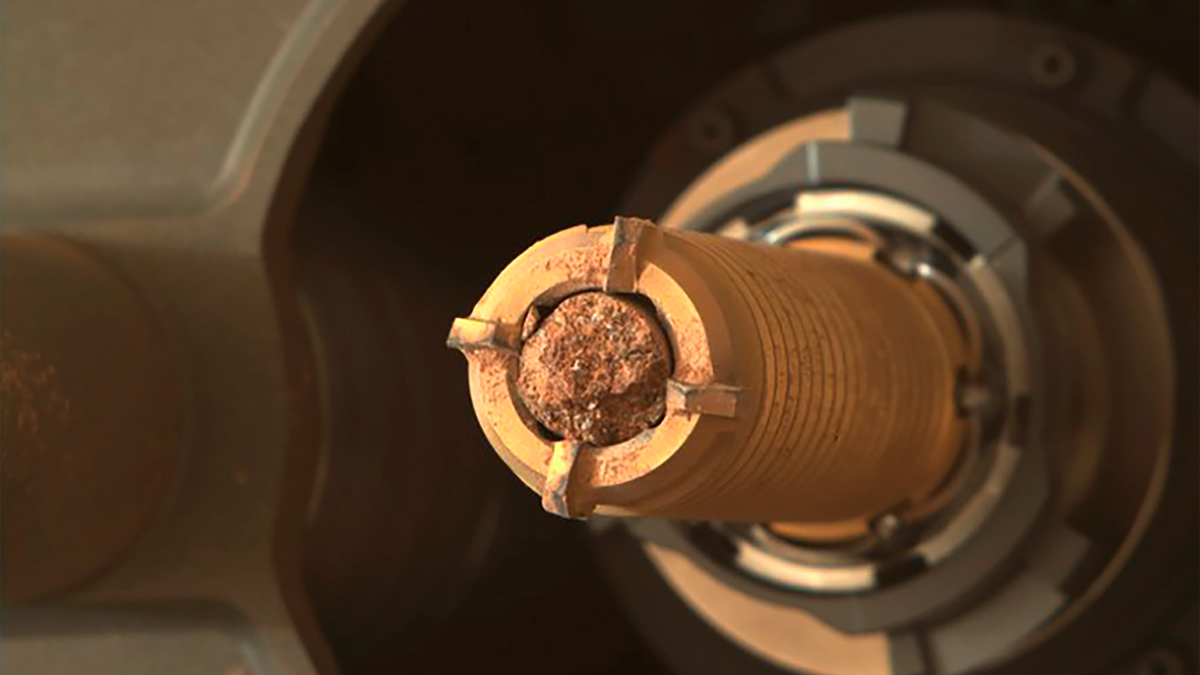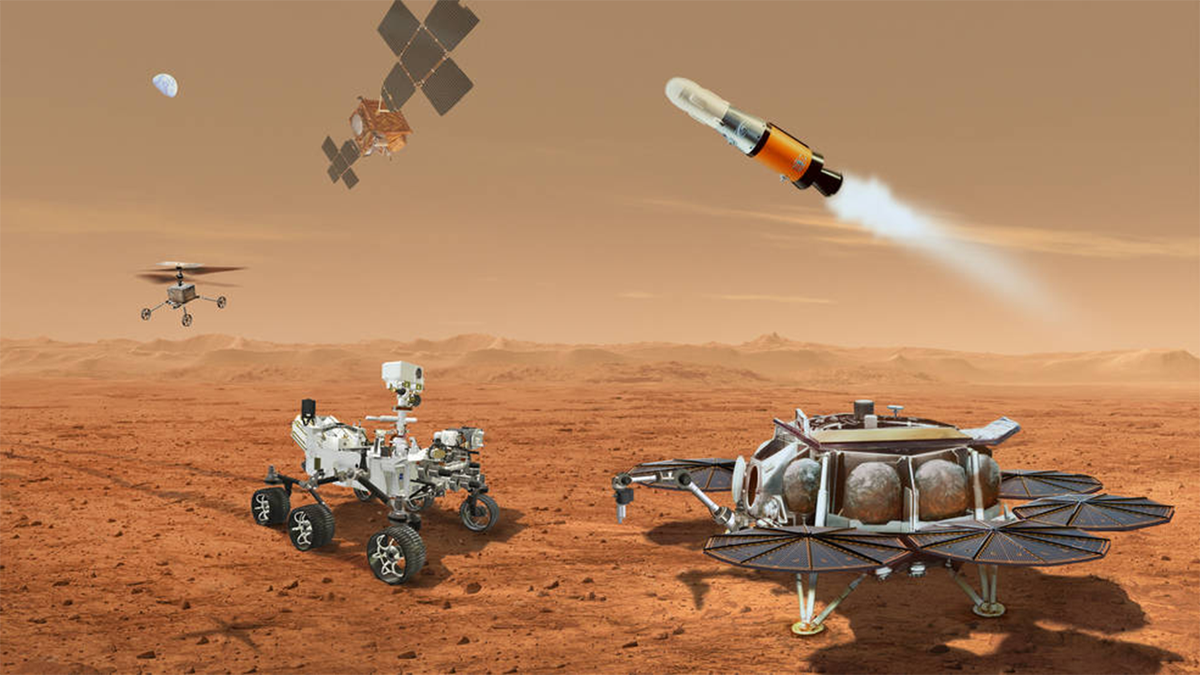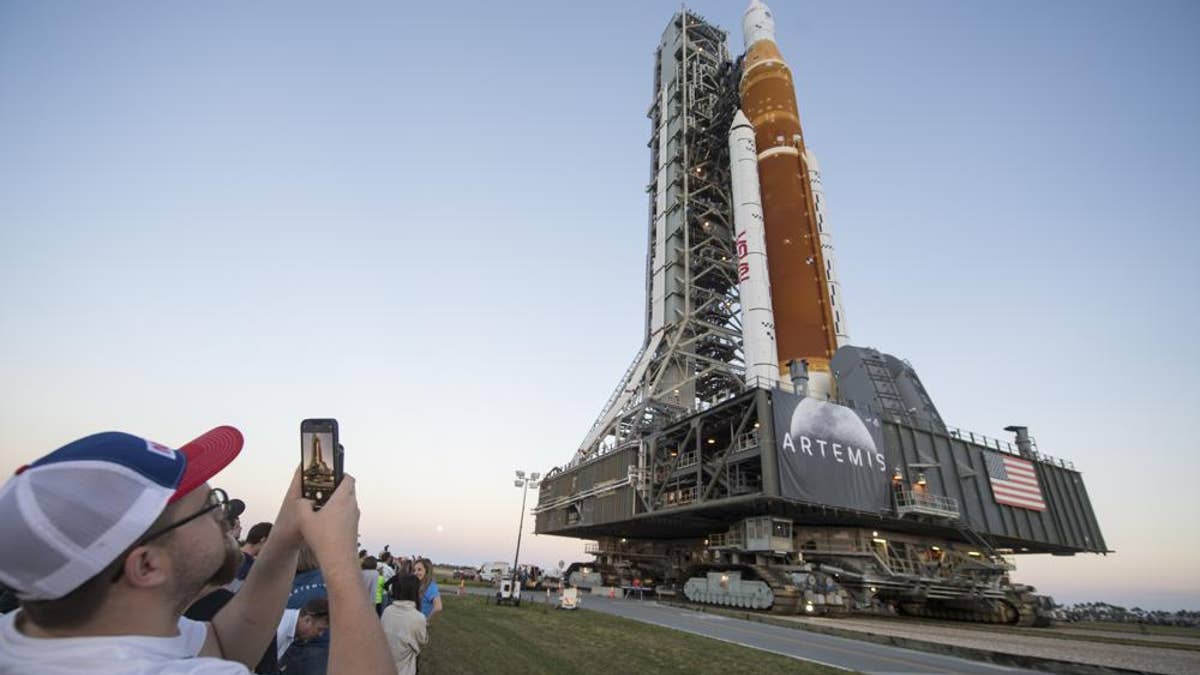Former NASA administrator shares ‘astonishing’ developments in space technology and exploration
Former NASA administrator Jim Bridenstine reveals new technology being developed on the International Space Station and reacts to stunning images of galaxies 13 billion lightyears away.
NASA is launching two more mini helicopters to Mars in its effort to return Martian rocks and soil samples to Earth.
Under the plan announced Wednesday, NASA’s Perseverance rover will do double duty and transport the cache to the rocket that will launch them off the red planet a decade from now.
Perseverance already has gathered 11 samples, with more rock drilling planned. The most recent sample, a sedimentary rock, holds the greatest promise of containing possible evidence of ancient Martian life, said Arizona State University's Meenakshi Wadhwa, chief scientist for the retrieval effort.
There's "a diversity of materials already in the bag, so to speak, and really excited about the potential for bringing these back," she said.
If Perseverance breaks down, the two helicopters being built and launched later this decade would load the samples onto the rocket instead.

A rock collected by the Perseverance rover on Mars. NASA is launching two more mini helicopters to Mars in its effort to recover Martian rocks and soil samples and bring them to Earth. (NASA via AP)
NASA'S PERSEVERANCE ROVER SPOTS PIECE OF ITS OWN LANDING GEAR ON MARS
The helicopters will be modeled after NASA’s successful Ingenuity, which is the first helicopter that humans have ever flown on another world, and has made 29 flights since arriving with Perseverance at Mars early last year. The chopper weighs just 4 pounds (1.8 kilograms). The new versions would have wheels and grappling arms.
NASA officials said Perseverance's impressive performance on Mars prompted the organization to ditch its plan to launch a separate fetch rover.

This illustration shows a concept for multiple robots that would team up to ferry to Earth samples collected from the Mars surface by NASA's Mars Perseverance rover. (NASA/JPL-Caltech)
Jeff Gramling, director of NASA's Mars sample return program, said the revised path forward is simpler. Each helicopter will be designed to lift one sample tube at a time, making multiple trips back and forth.
"We have confidence that we can count on Perseverance to bring the samples back, and we’ve added the helicopters as a backup means," Gramling said.
In a press release, Thomas Zurbuchen, associate administrator for science at NASA Headquarters in Washington, said, "The conceptual design phase is when every facet of a mission plan gets put under a microscope. …There are some significant and advantageous changes to the plan, which can be directly attributed to Perseverance’s recent successes at Jezero and the amazing performance of our Mars helicopter."
He then tweeted out "The new architecture of Mars Sample Return is based on new studies & recent achievements at Mars that has allowed us to consider options that weren’t available to us even one year ago! I’m excited for this innovative approach to make something unprecedented, a reality!"
NASA is collaborating with the European Space Agency on the retrieval mission. If all goes as planned, as many as 30 samples would blast off from Mars in 2031 and arrive at Earth in 2033. Lab analysis is needed to see whether any sample holds signs of microbial life that may have existed on Mars billions of years ago when water flowed on the planet.

Invited guests and NASA employees take photos as NASA's Space Launch System (SLS) rocket with the Orion spacecraft aboard is rolled out of High Bay 3 of the Vehicle Assembly Building for the first time, at the Kennedy Space Center in Cape Canaveral, Fla. (Aubrey Gemignani/NASA via AP, File)
NASA MARS ROVER DISCOVERS WEIRD STRING-LIKE OBJECT THAT GOES VIRAL
NASA noted that for the helicopters, "With its architecture solidified during this conceptual design phase, the program is expected to move into its preliminary design phase this October. In this phase, expected to last about 12 months, the program will complete technology development and create engineering prototypes of the major mission components."
CLICK HERE TO GET THE FOX NEWS APP
As for the grounded ExoMars rover, it cannot be refashioned to help retrieve these samples, said David Parker, director of human and robotic exploration for ESA. It was returned to storage after Russia and Europe cut ties with the project because of the war in Ukraine. Russia was supposed to provide the rocket ride.
A decision on when the rover can launch to Mars later this decade won't come until late fall, Parker said.
The Associated Press contributed to this report

